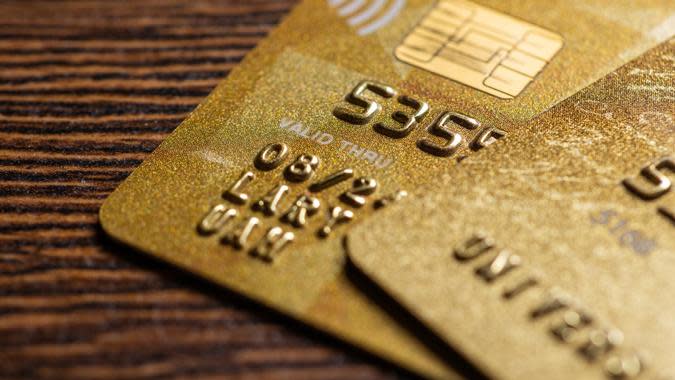Do These 7 Things Now If You Have $10,000 in Credit Card Debt

While you might not feel like you'd ever be $10,000 in credit card debt, it can happen more easily than you think. Consistent overspending can obviously take you there over time, but if you lose your job or face an unexpected medical expense, you can quickly run up a $10,000 tab as well. Since credit card interest rates are often 15% per year or more, that $10,000 can double again in no time at all.
Take a Look Back: 2022 Year in Review
Read: 5 Things You Must Do When Your Savings Reach $50,000
If you find yourself breaking the five-digit level, it's time to take concrete steps to address your debt before it balloons out of control. Here are some things you can do.

Relax, Breathe, Assess
The first step to take if you have a large amount of debt is to take a moment to breathe deep, relax and assess where you really stand. Understand that making emotional decisions at this point won't help you climb out of your hole. Keeping a clear head allows you to plan out a course of action so that you can get out of debt once and for all. Most people can manage to pay off $10,000 in debt over time if they have a plan, so don't panic and take steps to handle it as soon as possible.
Take Our Poll: How Long Do You Think It Will Take You To Pay Off Your Credit Card Debt?

Stop Extraneous Spending
If you ever want to climb out of the financial hole created by your credit card debt, you have to stop digging first. Immediately cut all of your extraneous spending, from luxury vacations to eating out to really anything that's not necessary for your own sustenance. Even if it wasn't extravagant spending that got you into debt, trimming down your budget as slim as possible is an important step in getting out of debt.

Open a 0% Balance Transfer Credit Card
The double-digit interest rates that most credit cards charge can make paying off debt feel like you are running in place. If your debt increases by 18% or 20% per year, the amount of your minimum payment will barely cover the amount of interest you're charged. To help prevent that, see if you can open a 0% APY credit card and transfer your balances. Although there's usually a fee of 3% or so, it's far less than the cost of interest on your other cards over the course of a year. This will buy you some time to make additional payments and reduce your debt without interest fighting against you.

Choose a Payoff Strategy
When it comes to paying off credit card debt, there are two commonly cited strategies: the debt snowball and the debt avalanche. With the debt snowball method, you'll pay off your smallest debt first until it's completely paid off, then you'll move on to the next-smallest. This method can give you motivation as you'll experience a series of small victories followed by larger ones. But if you want to save as much interest as possible, use the debt avalanche method. The debt avalanche method requires you to pay the debt with the highest interest rate first, before moving onto the card with the next-highest rate. This method can be more challenging psychologically, as you may not pay off your first debt for some time, but mathematically it makes the most sense.

Raise Additional Cash
Although you may not think you have the cash to pay down your debt, you might be more liquid than you think. There are surely some things around your house that you no longer need or that have value, and you may be able to raise a significant amount of money on sites like eBay. You could also consider earning additional income through a side gig. Putting in just a few hours a week could help you earn $500 or more per month to help pay down your debt. Earning that amount could raise you $6,000 per year, or more than half that you need to pay off your debt.

Check Your Home Equity
Although taking out a loan against your house isn't the optimal credit card payoff strategy, if you're diligent about making payments -- and you have plenty of equity built up in your home -- it can end up saving you money in the long run. Typical home equity loans run in the single digits, whereas most credit cards charge 15% to 20% or more in interest. On a strictly mathematical scale, this can make tapping your home equity a smart move if you really need to pay off some debt. Just be aware that you'll be putting your house at risk if you end up defaulting on your loan, so you'll have to be sure you can afford these payments. Consider talking with your financial advisor before you take a step as drastic as using your home equity to pay down credit card debt.

Contact Your Creditors
If you're really falling into a deep debt hole that you can't see a way out of, it's time to contact your creditors. This should be one of your last steps, short of bankruptcy, as it may cause damage to your credit report. But it can also help you get out of debt. Tell your creditors that you are having trouble making your payments and you may be able to negotiate anything from a lower minimum amount due to a lower interest rate or even some level of debt forgiveness.
More From GOBankingRates
This article originally appeared on GOBankingRates.com: Do These 7 Things Now If You Have $10,000 in Credit Card Debt
